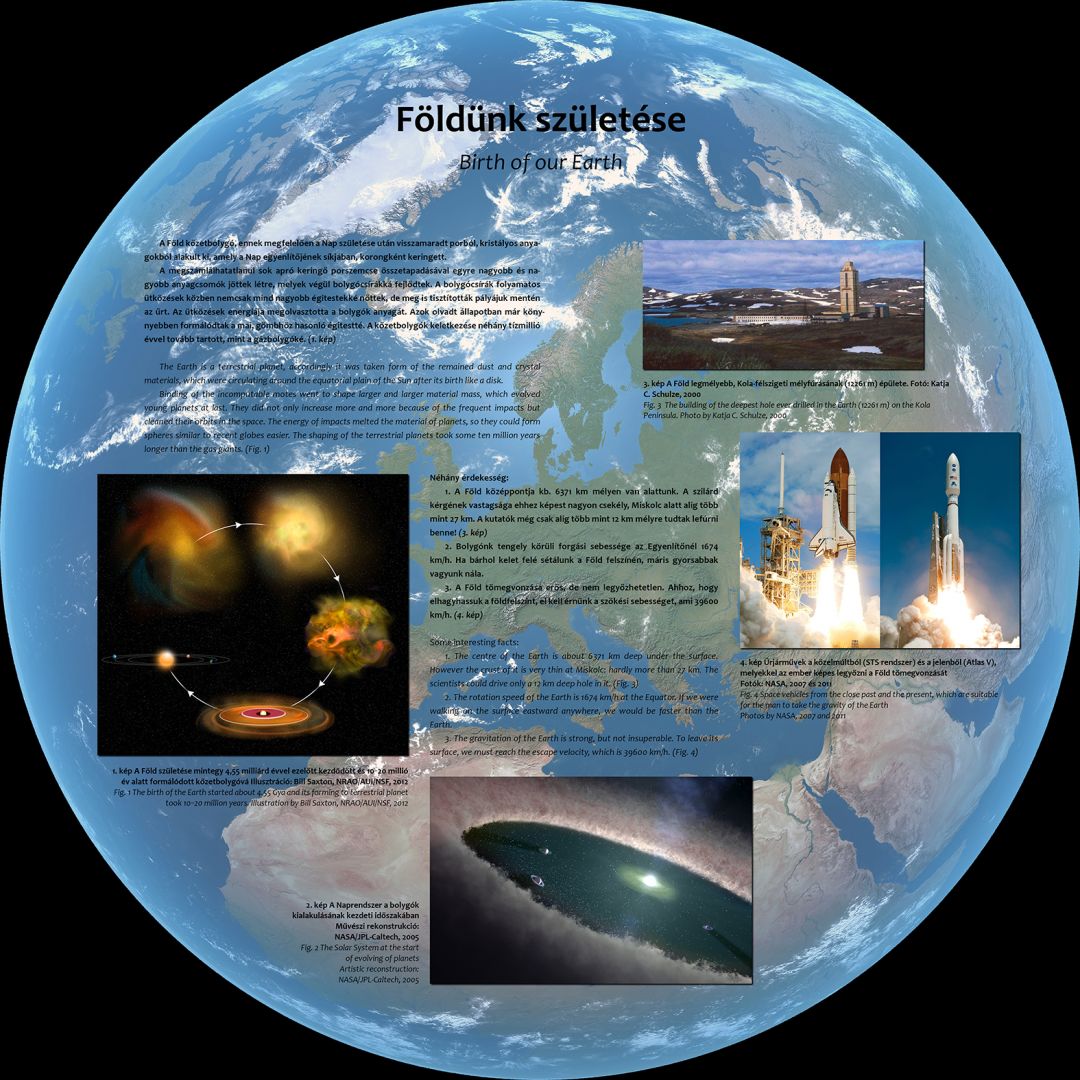GEOHISTORICAL GALERY - 2. view
Birth of our Earth
The Earth is a terrestrial planet, accordingly it was taken form of the remained dust and crystal materials, which were circulating around the equatorial plain of the Sun after its birth like a disk.
Binding of the incomputable motes went to shape larger and larger material mass, which evolved young planets at last. They did not only increase more and more because of the frequent impacts but cleaned their orbits in the space. The energy of impacts melted the material of planets, so they could form spheres similar to recent globes easier. The shaping of the terrestrial planets took some ten million years longer than the gas giants. (Fig. 1)
Some interesting facts:
1. The centre of the Earth is about 6371 km deep under the surface. However the crust of it is very thin at Miskolc: hardly more than 27 km. The scientists could drive only a 12 km deep hole in it. (Fig. 3)
2. The rotation speed of the Earth is 1674 km/h at the Equator. If we were walking on the surface eastward anywhere, we would be faster than the Earth.
3. The gravitation of the Earth is strong, but not insuperable. To leave its surface, we must reach the escape velocity, which is 39600 km/h. (Fig. 4)
Fig. 1 The birth of the Earth started about 4.55 Gya and its forming to terrestrial planet took 10‒20 million years. Illustration by Bill Saxton, NRAO/AUI/NSF, 2012
Fig. 2 The Solar System at the start of evolving of planets. Artistic reconstruction: NASA/JPL-Caltech, 2005
Fig. 3 The building of the deepest hole ever drilled in the Earth (12261 m) on the Kola Peninsula. Photo by Katja C. Schulze, 2000
Fig. 4 Space vehicles from the close past and the present, which are suitable for the man to take the gravity of the Earth. Photos by NASA, 2007 and 2011
